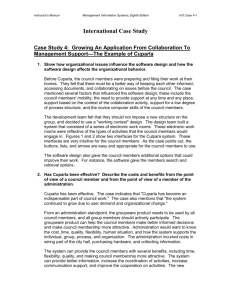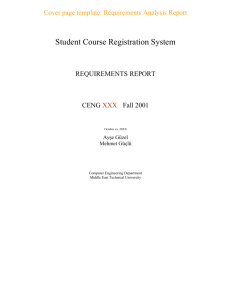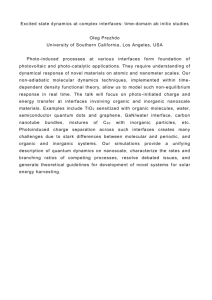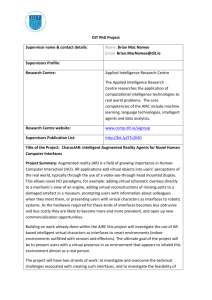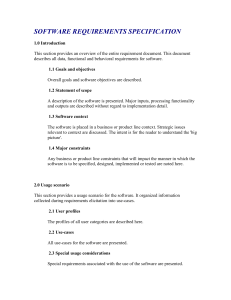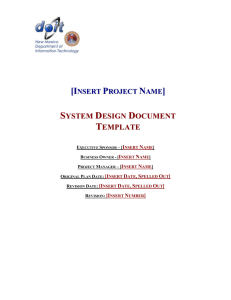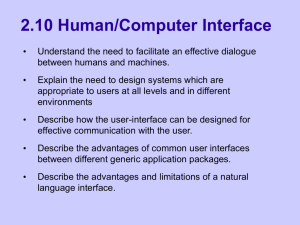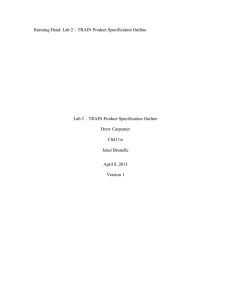Inteface analysis technique
advertisement
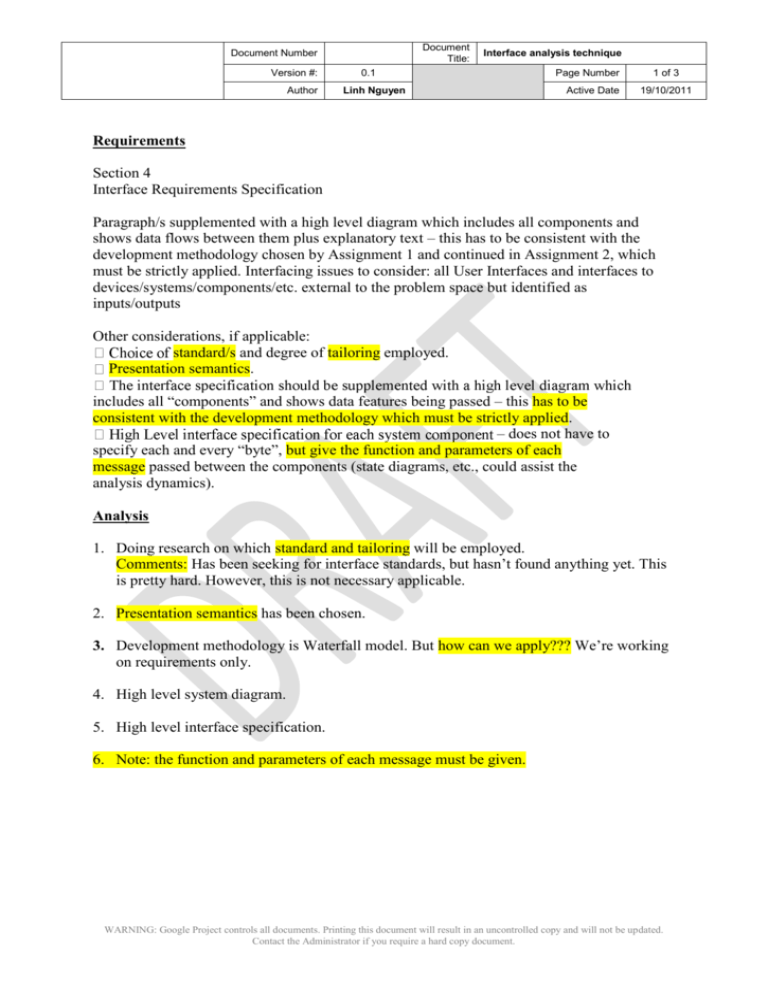
Document Title: Document Number Version #: Author Interface analysis technique 0.1 Linh Nguyen Page Number Active Date 1 of 3 19/10/2011 Requirements Section 4 Interface Requirements Specification Paragraph/s supplemented with a high level diagram which includes all components and shows data flows between them plus explanatory text – this has to be consistent with the development methodology chosen by Assignment 1 and continued in Assignment 2, which must be strictly applied. Interfacing issues to consider: all User Interfaces and interfaces to devices/systems/components/etc. external to the problem space but identified as inputs/outputs Other considerations, if applicable: standard/s and degree of tailoring employed. Presentation semantics. includes all “components” and shows data features being passed – this has to be consistent with the development methodology which must be strictly applied. – does not have to specify each and every “byte”, but give the function and parameters of each message passed between the components (state diagrams, etc., could assist the analysis dynamics). Analysis 1. Doing research on which standard and tailoring will be employed. Comments: Has been seeking for interface standards, but hasn’t found anything yet. This is pretty hard. However, this is not necessary applicable. 2. Presentation semantics has been chosen. 3. Development methodology is Waterfall model. But how can we apply??? We’re working on requirements only. 4. High level system diagram. 5. High level interface specification. 6. Note: the function and parameters of each message must be given. WARNING: Google Project controls all documents. Printing this document will result in an uncontrolled copy and will not be updated. Contact the Administrator if you require a hard copy document. Document Title: Document Number Version #: Author Interface analysis technique 0.1 Linh Nguyen Page Number Active Date 2 of 3 19/10/2011 Techniques 1. For presentation semantics: uses Microsoft Visio as the tool and Program Structure Diagram as the technique to represent interface diagrams. Details is shown as follows: o Use data flow arrow: to represent data flow through interfaces o Use flowchart shape: to represent for interfaces. For external interfaces: use horizontal diagrams like below: For internal interfaces: use vertical diagrams like below: Export file to a JPEG file. Note: data will be in form of function of parameters: For examples: location = [int longitude, int latitude] Repel mode request = requestRepel () 2. For interface specification, at least comprises: Interface elements: Data features being passed. Input, Output Operation (refers to explanatory text) Interface analysis procedure 1. Find all possible internal and external interfaces by thinking of how data flows. 2. Identify type of interfaces. 3. Start drawing diagram which represent for protocols. 4. Define: input, output. 5. Specify the operation associated with those inputs, outputs. WARNING: Google Project controls all documents. Printing this document will result in an uncontrolled copy and will not be updated. Contact the Administrator if you require a hard copy document. Document Title: Document Number Version #: Author Interface analysis technique 0.1 Linh Nguyen Page Number Active Date 3 of 3 19/10/2011 6. Show relevant components regardless to an interface. 7. Specify requirements associated with an interface. WARNING: Google Project controls all documents. Printing this document will result in an uncontrolled copy and will not be updated. Contact the Administrator if you require a hard copy document.

